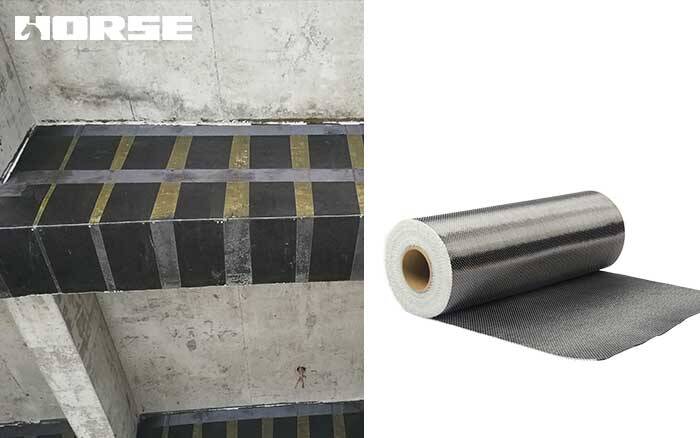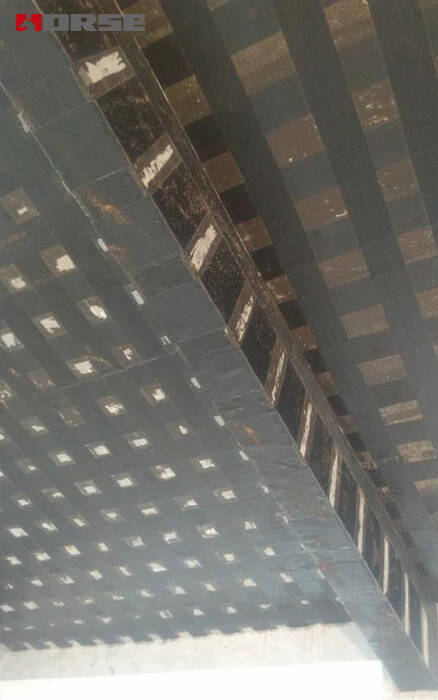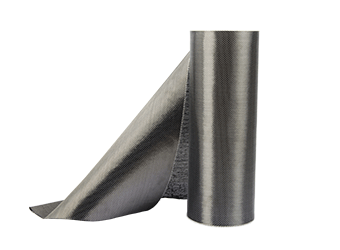Solutions
Horse Construction offers full range of structural strengthening materials with technical supports, documentation supports, products supports, project supports.
concrete structural strengthening reinforcement material - FRP

Application of FRP in concrete structural strengthening
At present, FRP materials are mainly used in civil engineering for two purposes:
① Repair and reinforcement of the old structure;
② FRP materials are used to replace steel bars or steel pipes directly in new structures.
From the perspective of applied material form, the most used material form for structural reinforcement and repair is sheet and plate, followed by bars. FRP bars are mainly used as FRP bars to replace ordinary steel bars and prestressed steel bars. There are few application examples of mesh profiles.
Among the sheets and plates, the fabric is used the most and the technology is the most mature (that is, the resin is impregnated before use, and then impregnated during the construction process). The use of plates is still small, but due to the high utilization rate of this form of material, the use has grown rapidly in recent years. (That is, the resin is impregnated before use to cure it into a plate shape, and the resin is used to paste it on the surface of the structure during construction, similar to pasting a steel plate). FRP sheets are mainly used for the reinforcement of concrete structures in the following forms.
(1) Paste FRP sheets on the tensile surfaces of beams and plates for bending reinforcement, and the fiber direction should be consistent with the axial direction of the member.
(2) Adopt closed pasting, u-shaped pasting or side pasting to strengthen the beam and column members under shear, and the fiber direction should be perpendicular to the member axis.
(3) Adopt enclosed paste to form confined concrete to strengthen the column for seismic reinforcement, and the fiber direction should be perpendicular to the column axis.
When choosing the FRP material system for concrete structure reinforcement, the short-term and long-term performance and environmental requirements of the material must be considered. Determining the materials used requires a comprehensive evaluation of multiple factors.

The mechanical performance of FRP sheet for concrete structural strengthening
1 The mechanical performance of the reinforced concrete beam
After the FRP material is pasted, the yield load and ultimate load of the beam's normal section are increased to a certain extent. The increase in ultimate load is more obvious. This is mainly due to the fact that the FRP material is very thin and has a low elastic modulus, which plays a small role before the steel bar yields. After the steel bar yields, on the one hand, the FRP material can give full play to its high-strength characteristics to continue to bear the load. On the other hand, it can play a role of reinforcement by limiting the development of cracks. In the same way, the FRP reinforced beam does not greatly increase the stiffness of the steel bar before yielding, but it increases the stiffness of the steel bar after yielding quite significantly, and the deformation of the beam is significantly reduced.
When FRP material is used for shear reinforcement, the shear capacity of the beam is also significantly improved. This shows that after the occurrence of oblique concrete cracks, FRP material can be used as the web tie rod of the truss model to improve the stress state in the reinforced concrete beam and increase the shear capacity. On the other hand, it plays a role of shear reinforcement by limiting the development of diagonal cracks.
When there is an initial bending moment, the strain of the FRP material has a certain hysteresis compared with the strain of the steel bar, and the yield load of the FRP material is increased but not significantly. When the initial bending moment is small, it has little effect on the ultimate bearing capacity. But when it reaches a certain value, as the initial bending moment increases, the ultimate bearing capacity decreases significantly. In practice, there is an initial bending moment for reinforcement members, and this phenomenon should be fully considered when designing. If the original structure is stressed during reinforcement, the stress of the concrete and steel bars on the component section should be calculated first, and then the ultimate strength of the FRP material should be reasonably determined based on the assumption of the flat section. Then referring to the ultimate strength design method of beams in the specification, the ultimate bearing capacity of FRP reinforced beams can be estimated more accurately.
In the case of dynamic load, due to the restrictive effect of FRP material on cracks, the outer line of the hysteresis curve is still approximately a straight line, indicating that the rigidity of the reinforced beam hardly decreases. This also illustrates the good fatigue resistance of FRP reinforced beams.
2 Mechanical performance of reinforced concrete columns
With the increase in the number of FRP sheets, the load-bearing capacity of columns with large or small biases is greatly improved, and the ability of the columns to withstand bending deformation is also greatly improved, which is especially obvious for columns with large biases. The external FRP sheet helps the steel bars to participate in the tension in the tension zone of the concrete, while in the compression zone, it can effectively restrain the transverse deformation of the concrete in the compression zone and increase the strength of the concrete. Thereby, the ultimate bearing capacity of the column is increased, the plastic deformation performance of the steel bar is fully exerted, and the ductility of the column is improved. In addition, after the column is reinforced with FRP material, under the same load level, the lateral deflection is reduced, which will reduce the secondary bending moment of the biased column.
Conclusion
FRP materials can not only be used for the structural reinforcement of concrete structures, but also for the reinforcement and anti-corrosion of steel structures, wooden structures and masonry structures.
You can find anything here you are in need of, have a trust trying on these products, you will find the big difference after that.

High strength, unidirectional carbon fiber wrap pre-saturated to form a carbon fiber reinforced polymer (CFRP) wrap used to strengthen structural concrete elements.

High strength carbon fiber reinforced polymer (CFRP) strip / laminate / plate for structural strengthening and concrete repair

High strength, unidirectional carbon fiber fabric pre-saturated to form a carbon fiber reinforced polymer (CFRP) fabric used to strengthen structural concrete elements.